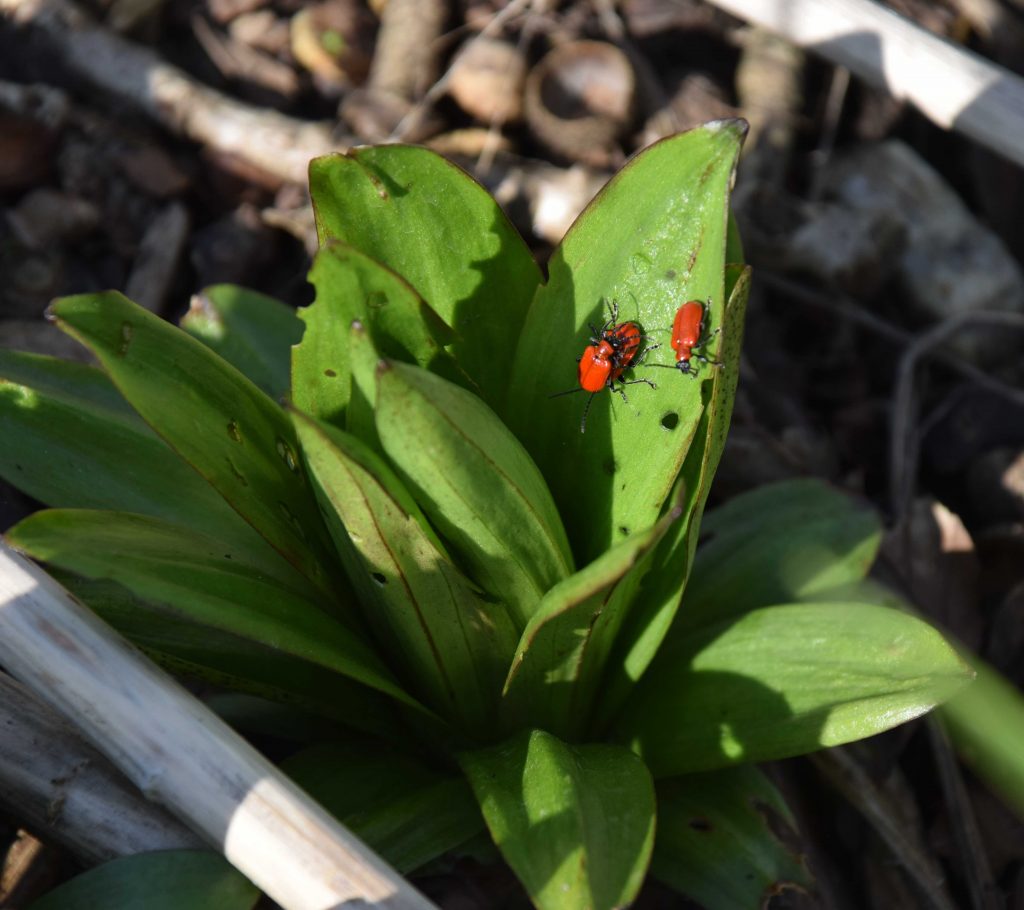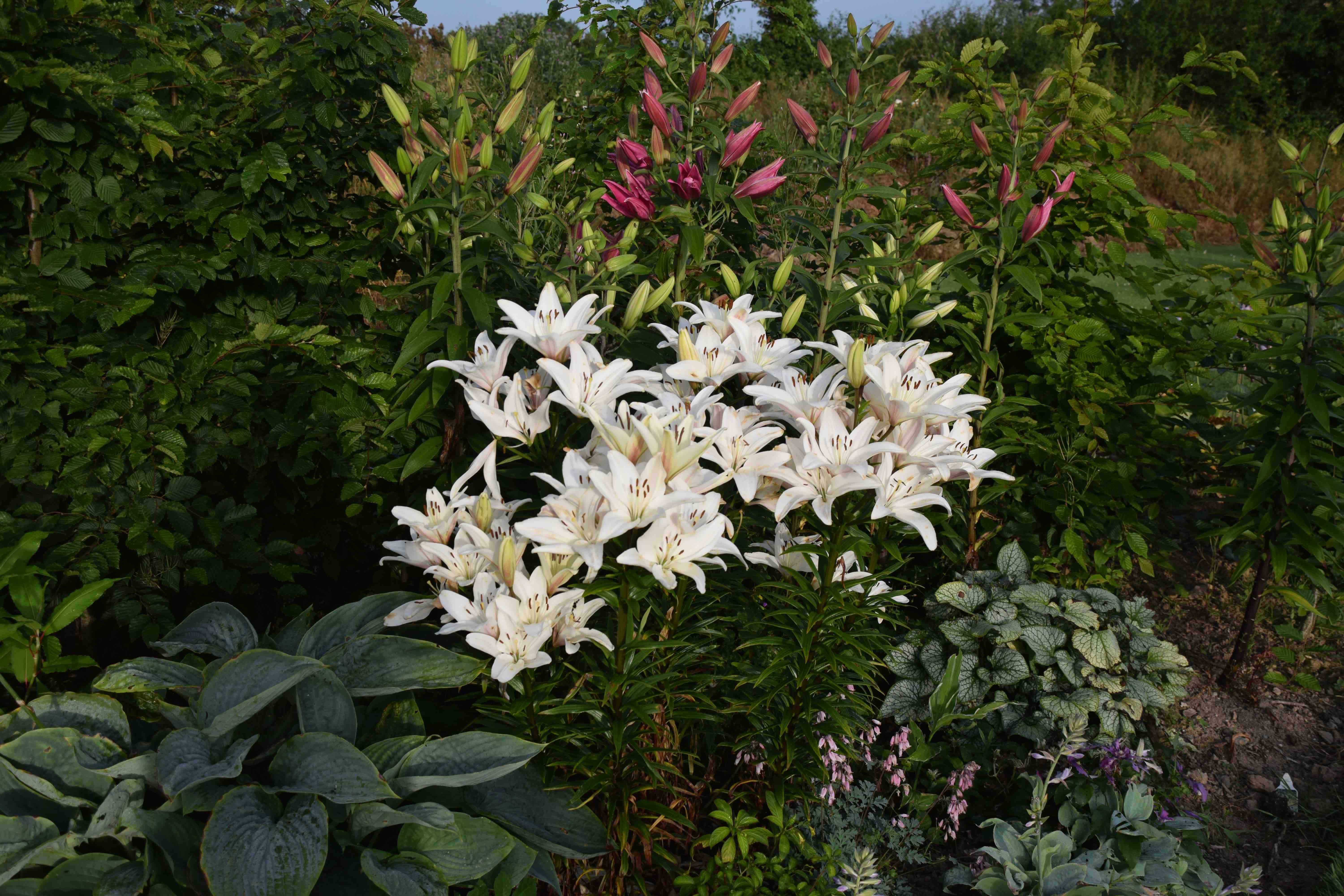
The next few months will be busy in the garden and the time to plant summer-flowering bulbs. Most of these are frost-tender and need to be started in heat but lilies are completely hardy. They can be planted now outdoors or in pots and if you have have lilies in the garden or in pots from previous years they can be left out all year round.
Lilies are strange bulbs because they do not have a protective tunic like daffodils or tulips (or onions) and should not be allowed to dry out too much. Early planting is best. They also have a few live roots at the base of the bulb and these are best if not shrivelled.
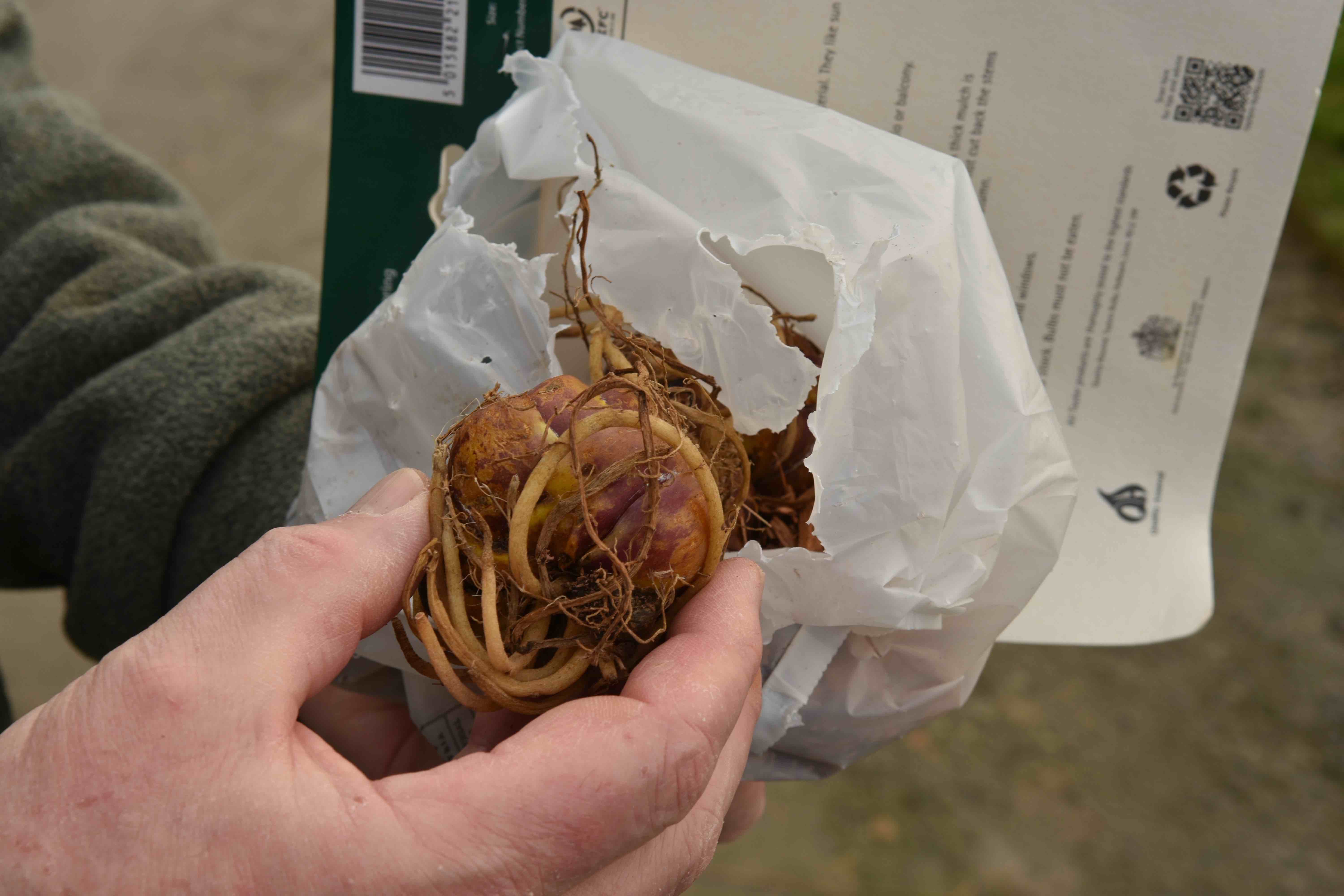
Most lilies are sold in colourful packs so you can see how lovely the flowers are. It annoys me that many are sold in pairs! One lily looks a bit lonely but two looks worse! I like three or more of each kind because they are slim plants – just a stem of leaves with huge flowers at the top. So buy two packs of each so you have four, at least.
Lilies like well-drained soil and hate wet, clay, waterlogged soil in winter. They will grow in clay soils if they are not too wet and you can improve the soil with sand, grit and organic matter. Mix these with the soil. Lilies are strange because most of them produce roots from the stem that grows from the top of the bulb. Because of this they are planted quite deeply – about 10-15cm deep.
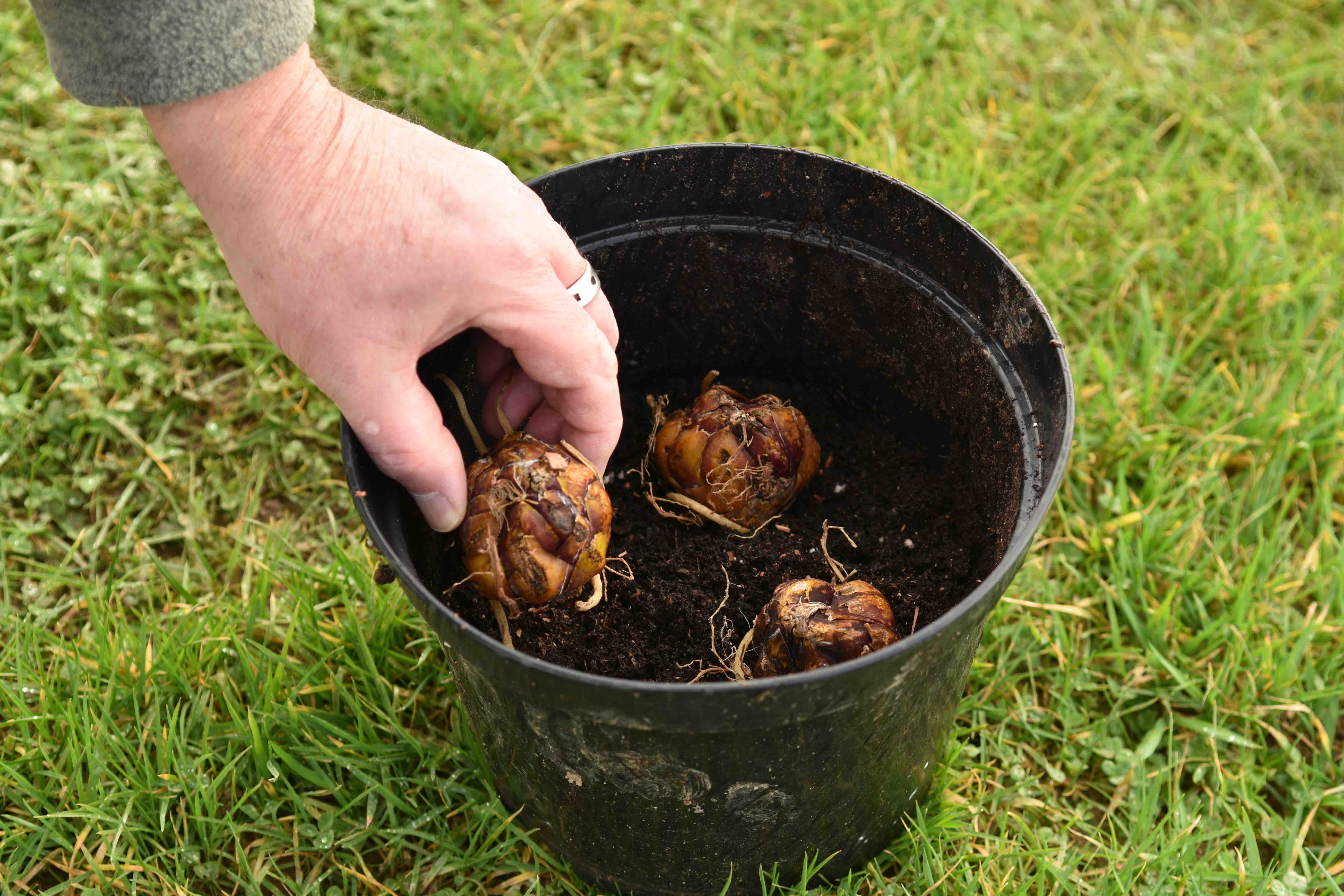
Lilies can be grown in pots on the patio but obviously the pot needs to be quite deep. Avoid very small pots because lilies can get quite tall and top-heavy. You can use multipurpose compost but I like to mix in some John Innes No 3 (about a third) because it helps with stability.
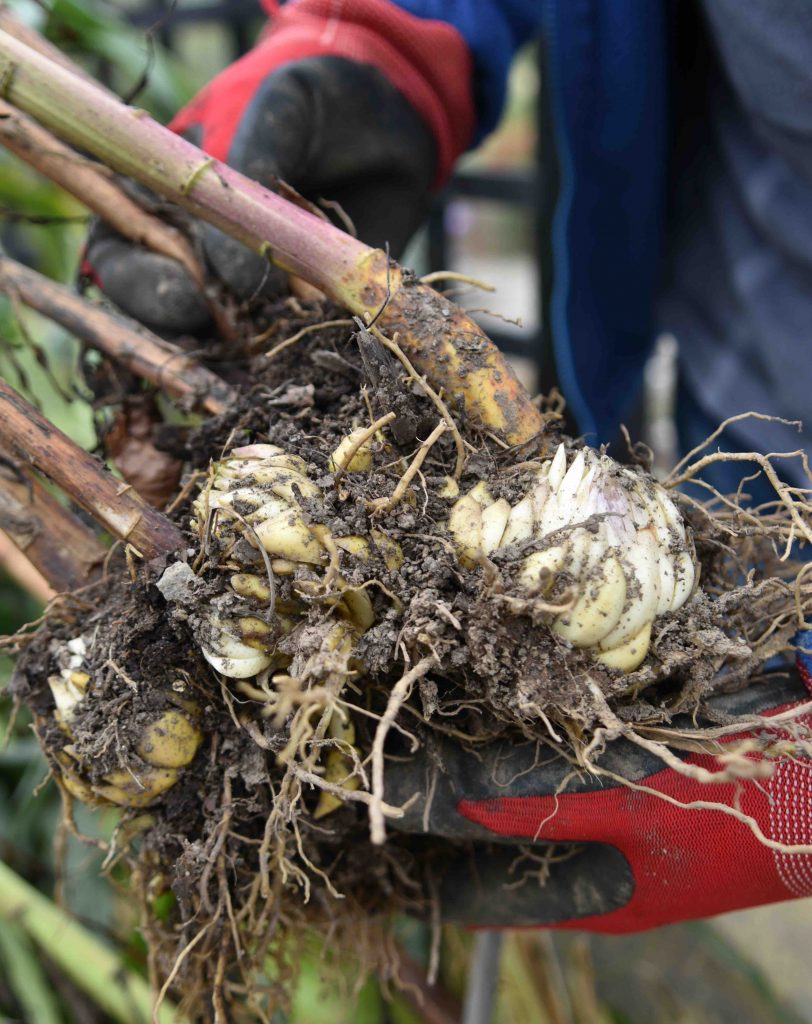
Some lilies increase and make dense clumps, often with small bulbs at the soil surface. If yours are getting crowded, now is a good time to carefully lift them and divide them, planting them immediately in some refreshed ground or in pots of new compost.
Lilies are exotic and often fragrant but are easy to grow. When I worked at Nags Hall the only lilies we sold were the common white Lilium regale (still worth growing) and the trumpet hybrids including ‘Pink Perfection’ and ‘African Queen’ along with the fragrant, late-flowering L. speciosum. The production of hybrids for the cut flower industry has led to hundreds of new lilies that are easy to grow. However, there are a few basics worth knowing:
Asiatic Lilies: These bloom in early summer, with flowers in many colours, including orange and bright yellow. The flowers usually face upwards and some are double, without pollen and they are not usually fragrant. They like a sunny spot and prefer a soil that contains lime. They can die out (over the years) in acid soils.
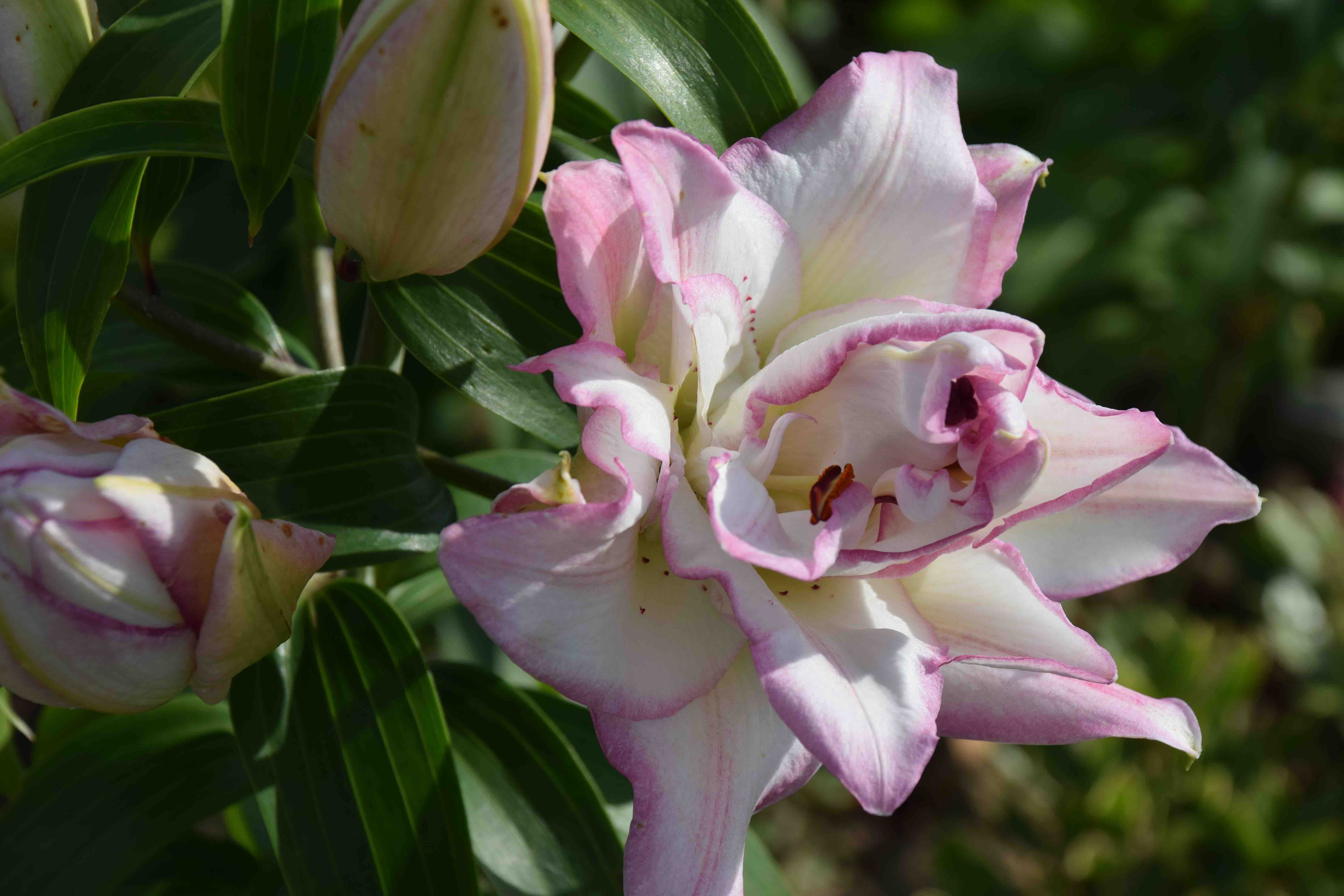
Oriental Lilies: Not to be confused with the Asiatics. These have large flowers, usually in white and pink or crimson and most bloom after the Asiatics and they are strongly scented. The flowers can face outwards or upwards and many are double (above). The most common is ‘Stargazer’ but this is shorter than most. All Orientals need acid compost so will not thrive unless you can grow rhodos and camellias in the garden. If growing in pots you need to use ericaceous compost.
Tree Lilies: These are often called OT lilies (they are hybrids of Oriental and Trumpet lilies) or skyscraper lilies. They are vigorous and tend not to split into smaller bulbs but get bigger and better every year. The clump below was five bulbs and planted four years ago. There are now more than a dozen stems, each 2.4m high with dozens of heavily scented flowers.
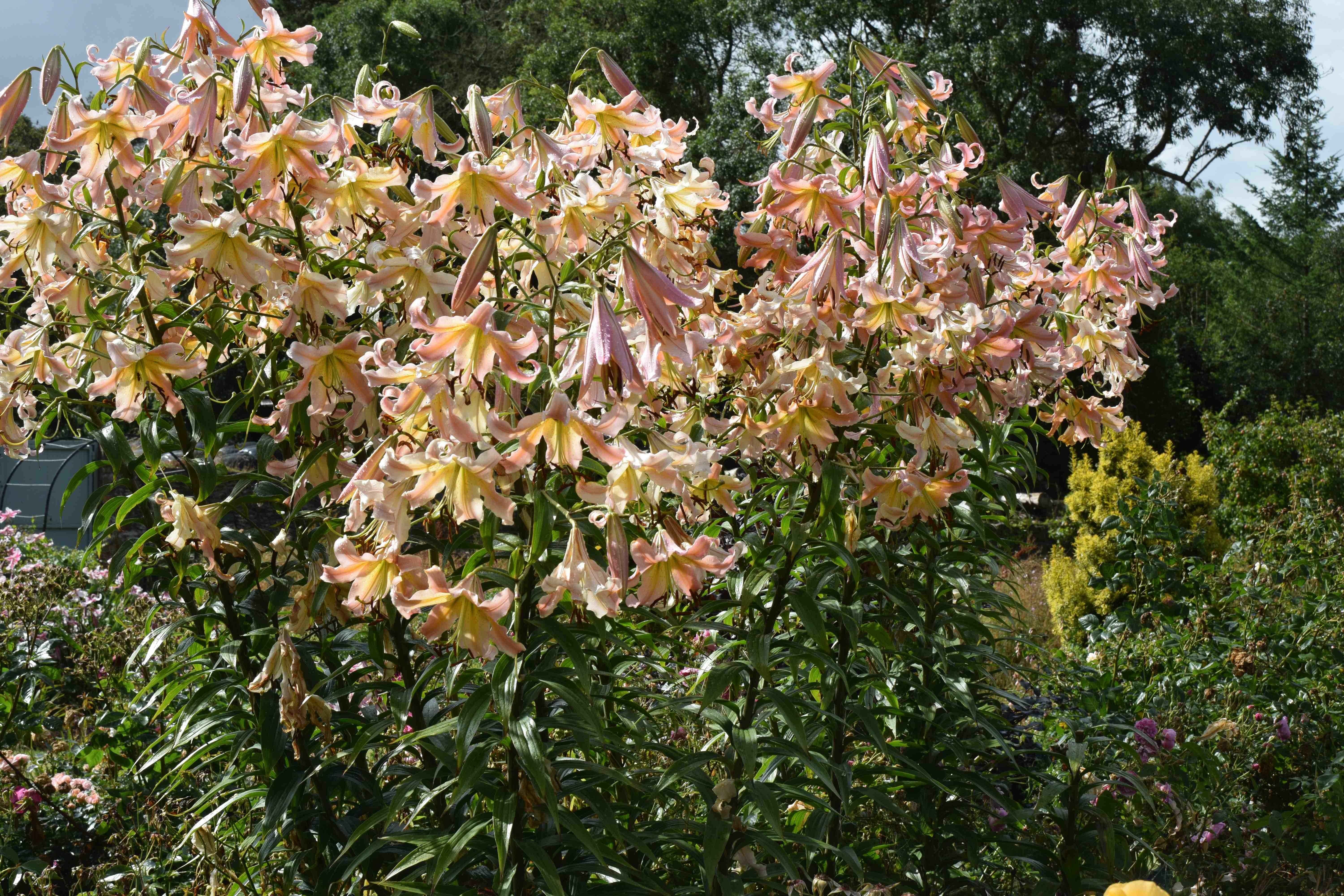
There are many other kinds of lilies but you must be careful if you have cats because the pollen is dangerous to them, if eaten. Choose double-flowered kinds or pinch off the stamens when the flowers open. There should be little risk to cats in the garden if the cats cannot brush past the open flowers and then eat the pollen as they groom their fur. Cut lilies in the home pose a greater risk. I have a (very pampered and treasured) cat but am not too worried about the lilies in the garden, but I do make sure I pick off the stamens if I cut them for the house – it also prevents the staining from the lily pollen.
And one last point! Lilies are often attacked by lily beetles: bright red beetles that eat the foliage and even the flowers. They lay eggs and these hatch into grubs that eat the leaves too. It is an understatement to say that they are destructive! They can appear as early as March when the lilies start to grow and you MUST pick them off as soon as you see them. Alternatively you can spray with an insecticide. I don’t pretend to be totally organic in the garden but I rarely use insecticides. The only exception is when I see lily beetle. I feel it is almost irresponsible to allow the lily beetles to mature and breed because they will fly off to other gardens. And spraying the adults in early spring, as the shoots start to appear, is not likely to pose a threat to other garden wildlife. But the choice is yours.
